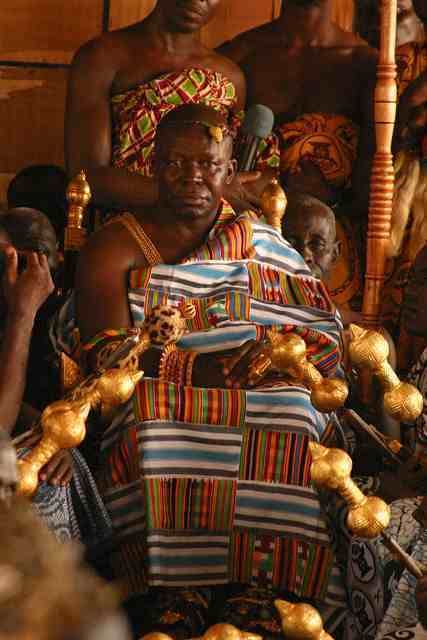Style His – Your Majesty Residence Manhyia Royal Palace | Formation c. 1670 Website The Ashanti Monarchy | |
 | ||
First monarch Osei Tutu Opemsoo
1701 to 1717 | ||
The Asantehene is the absolute monarch of the Kingdom of Ashanti and Ashantiland and of the Ashanti (or Asante) people's ethnic group. The Ashanti royal house traces its line to the Oyoko (an Abusua, meaning 'clan') Abohyen Dynasty of Nana Twum and the Beretuo Dynasty of Osei Tutu Opemsoo, who formed the Empire of Ashanti in 1701 and was crowned Asantehene (King of all Ashanti). Osei Tutu held the Ashanti throne until his death in battle in 1717, and was the sixth king in Asante royal history.
Contents
- Elections and regents
- The colonial era and Ashanti independence
- List of rulers
- Asantehene of the Kingdom of Ashanti Ashanti Empire
- References
The Asantehene is the ruler of the Ashanti people ethnic group and the Kingdom of Ashanti and Ashantiland the homeland of the Ashanti people ethnic group, historically a position of great power. The Asantehene is traditionally enthroned on a golden stool known as the Sika 'dwa, and the office is sometimes referred to by this name. The Asantehene is also the titular ruler of Kumasi, capital of Ashanti. The Asante state, or Asanteman (also known as the Kingdom of Ashanti, Ashantiland, Ashanti and Asante, Empire of Ashanti or Ashanti Confederacy), comprises the Ashanti region. The Ashanti Empire and Confederacy comprised part of present-day Ashantiland (southern Ghana) and portions of present-day eastern Côte d'Ivoire between the 17th and 20th centuries.
The current Asantehene is Otumfuo Nana Osei Tutu II, born Nana Kwaku Dua, who ascended as the 16th Asante king in April 1999. Osei Tutu II was one of seven descendants who were eligible to the heir presumptive.
The Asantehene is also automatically the lifetime patron of the Kumasi Asante Kotoko Football Club.
Elections and regents
During the period between the death of an Asantehene and the election of a successor, the Mamponghene, the Asantehene's deputy, acts as a regent. This policy was only changed during a time of civil war in the late 19th century, when the Kwasafomanhyiamu or governing council itself ruled as regent. The succession is decided by a series of councils of Asante nobles and other royal family .
The colonial era and Ashanti independence
The Ashanti Confederacy was made a British protectorate in 1902, and the office of Asantehene was discontinued. In 1926, the British permitted the repatriation of Prempeh I – whom they had exiled to the Seychelles in 1896 – and allowed him to adopt the title Kumasehene, but not Ghana Asantehene. However, in 1935, the British finally granted the Ashanti self-rule as the Kingdom of Ashanti and Ashantiland, and the title of Asantehene was revived.
On 6 March 1957, the Kingdom of Ashanti and Ashantiland entered a state union with Ghana, the Northern Territories, the Gold Coast Crown Colony and the British Mandate of Togoland to form the modern state of Ghana. The office of Asantehene is now a sub-national absolute constitutional monarchy, and is protected by the Ghanaian constitution.
List of rulers
All rulers in the lists below were members of the Oyoko Abohyen Dynasty.
Asantehene of the Kingdom of Ashanti (Ashanti Empire)
All regents were members of the Beretuo Dynasty who were and still are the holders of the title Mamponghene.
Upon the death of the Asantehene, it is the task of the Mamponghene to act as the regent, or Awisiahene.
